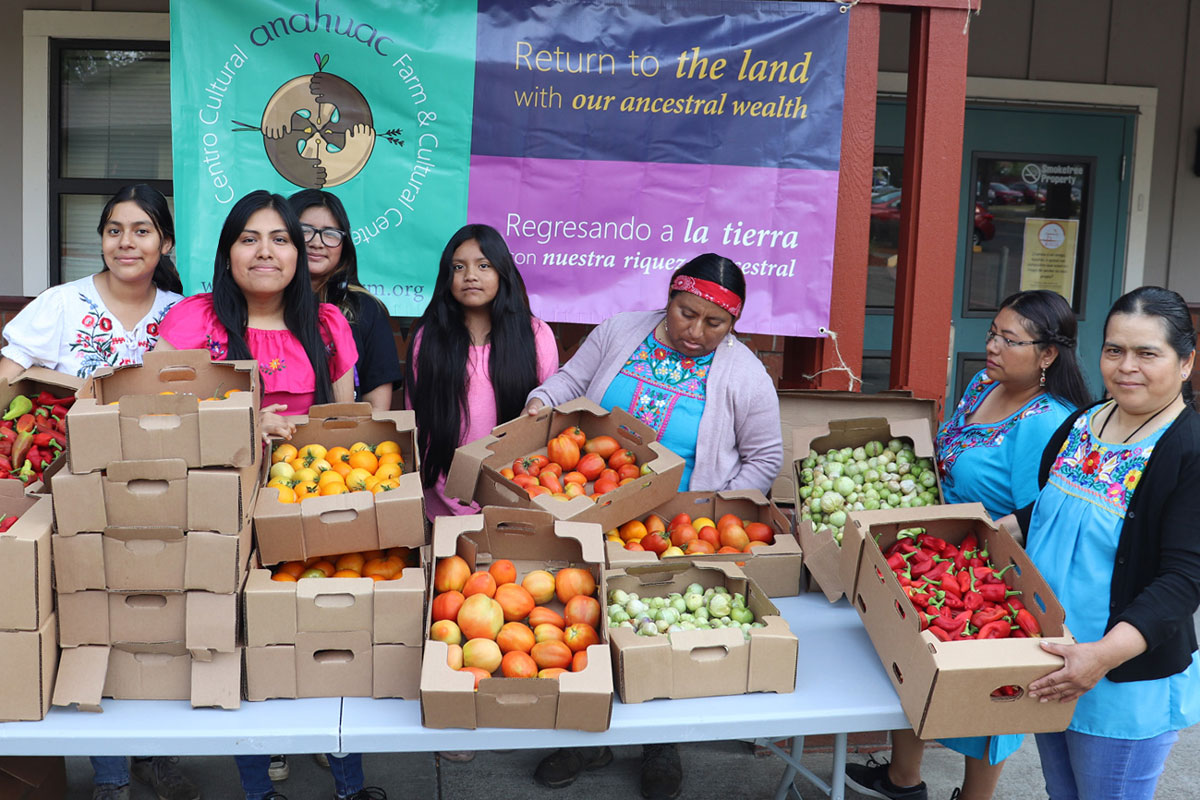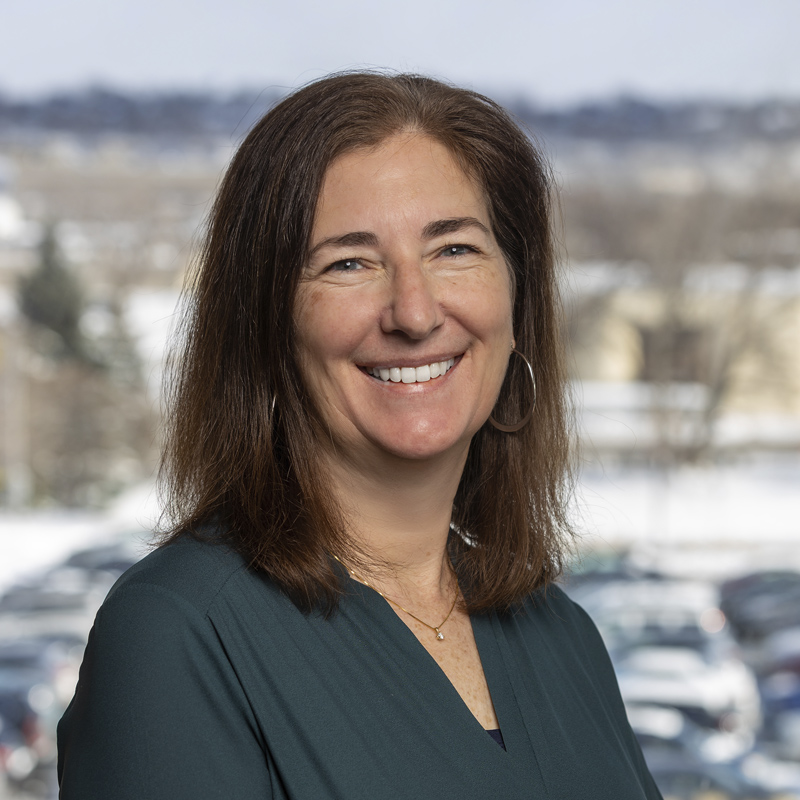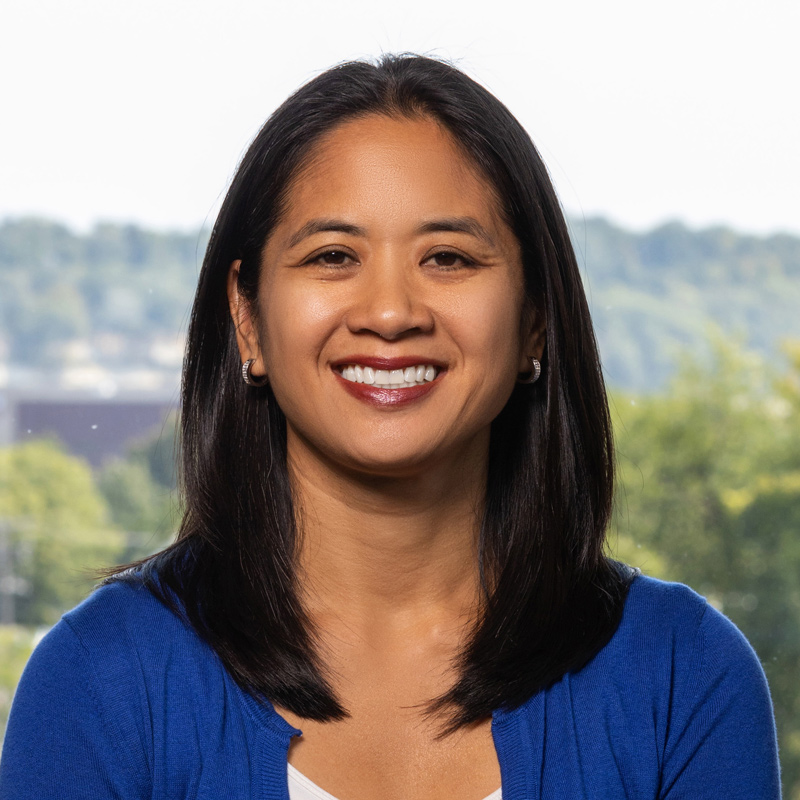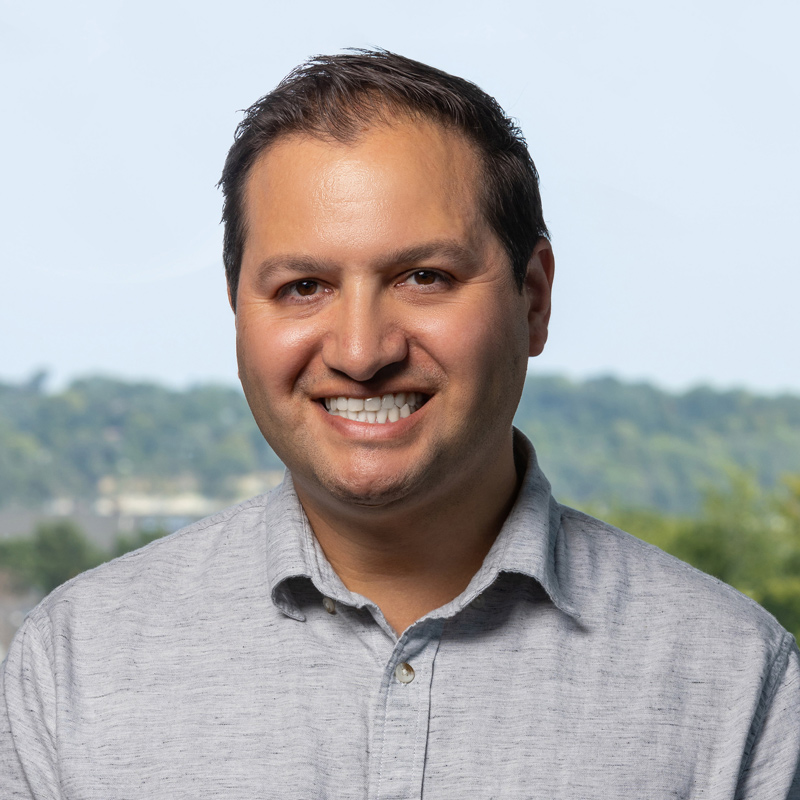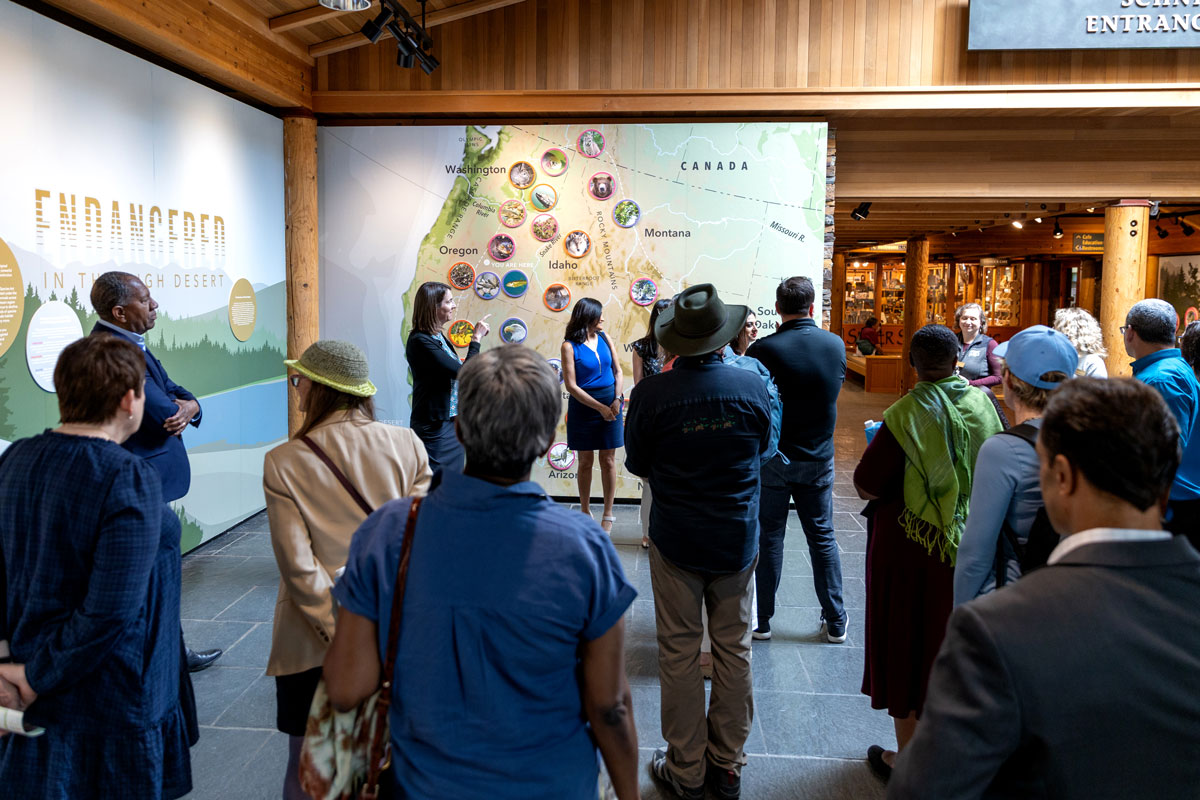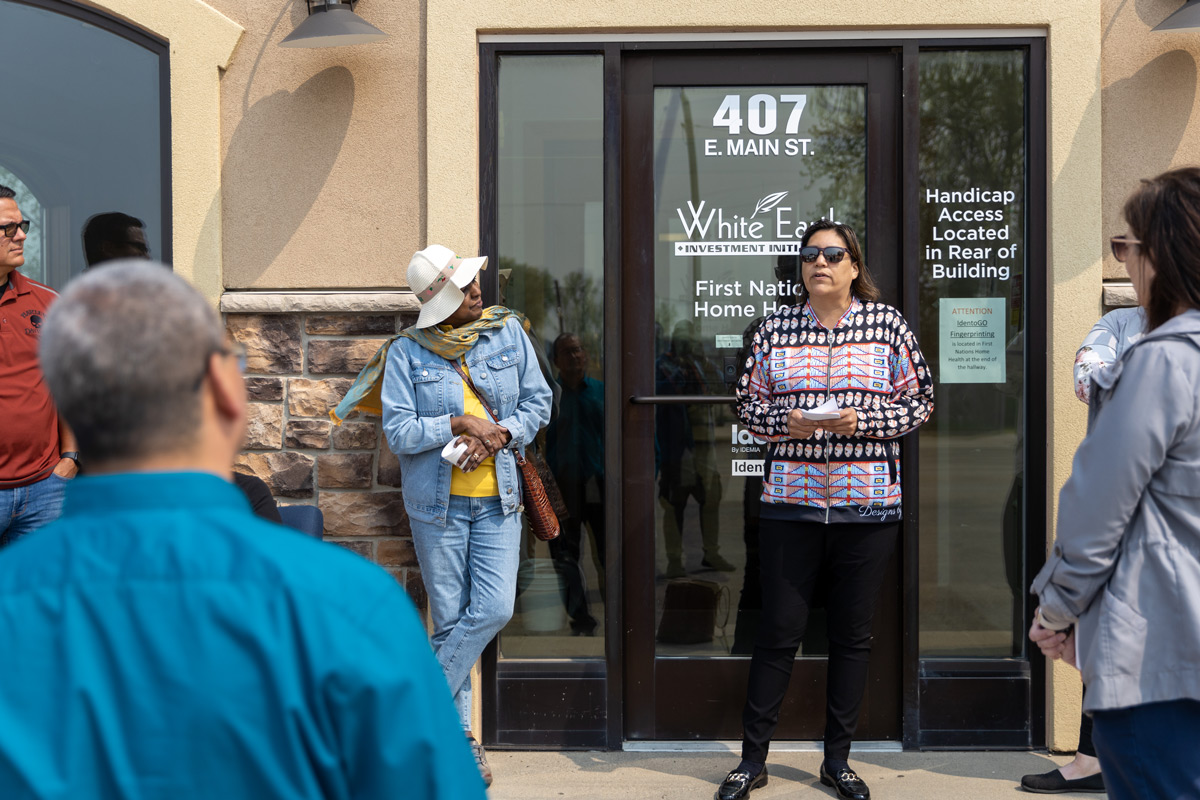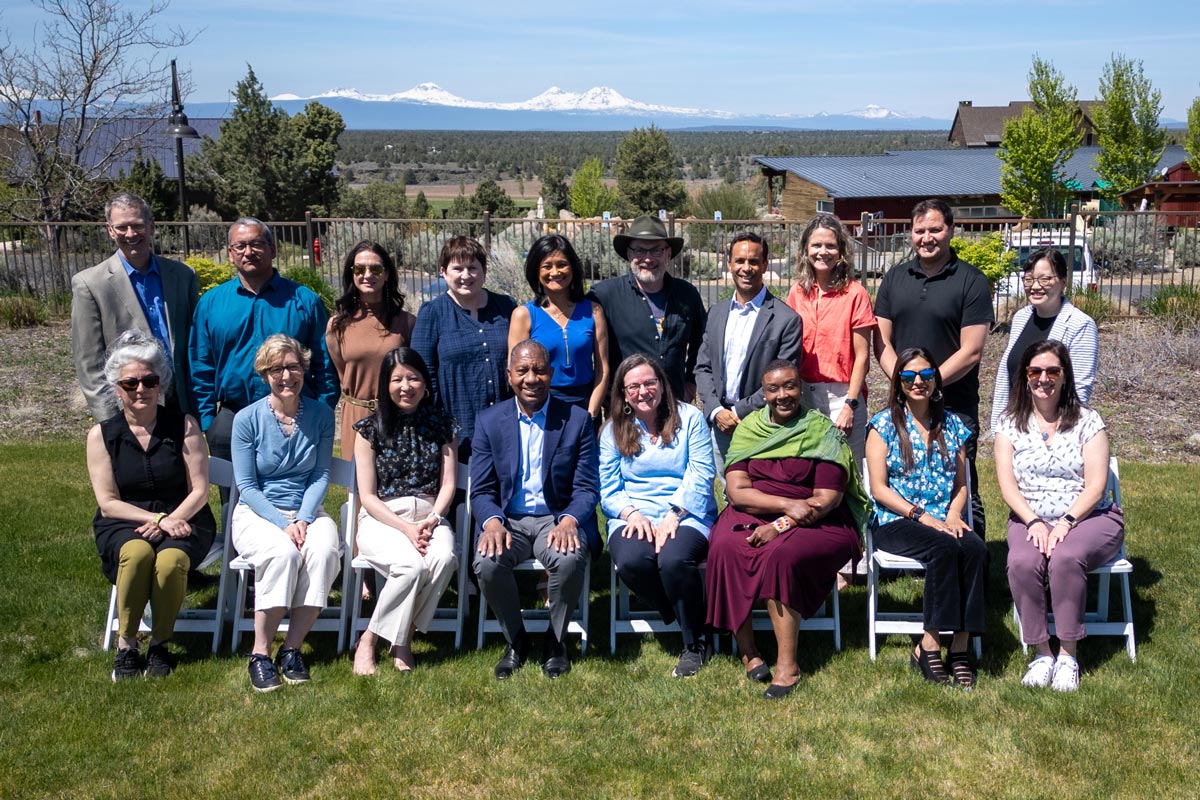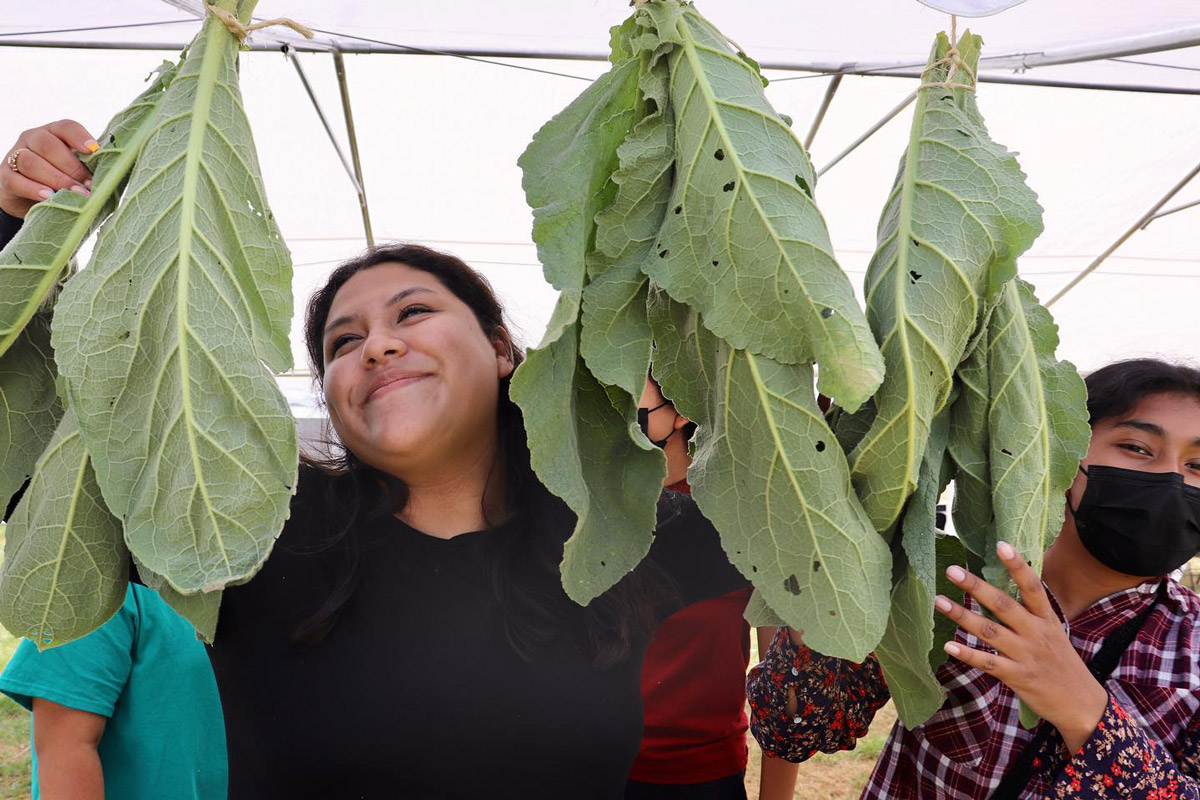
Herbal workshop at the Anahuac Farm, Woodburn, OR. Photo courtesy CAPACES Leadership Institute.
Many immigrants to the US experience a form of exclusion that involves rejection of ancestral wisdom and cultural practices. At Anahuac, community members learn about traditional foods and herbs and participate in agricultural ceremonies and healing practices.
Anahuac is based on principles of community wealth building—the idea that wealth should be shared and distributed for all members of a community. It’s a model that prioritizes collective wealth and well-being without exploiting individuals for their labor. It supports the welfare of producers, consumers, workers, and the environment.
This concept is the ultimate pushback on racial capitalism and provides alternatives to racial capitalism’s practices of exclusion, exploitation, and individualism. Its work shows how Latino communities are developing collective economic power rooted in their cultural assets.
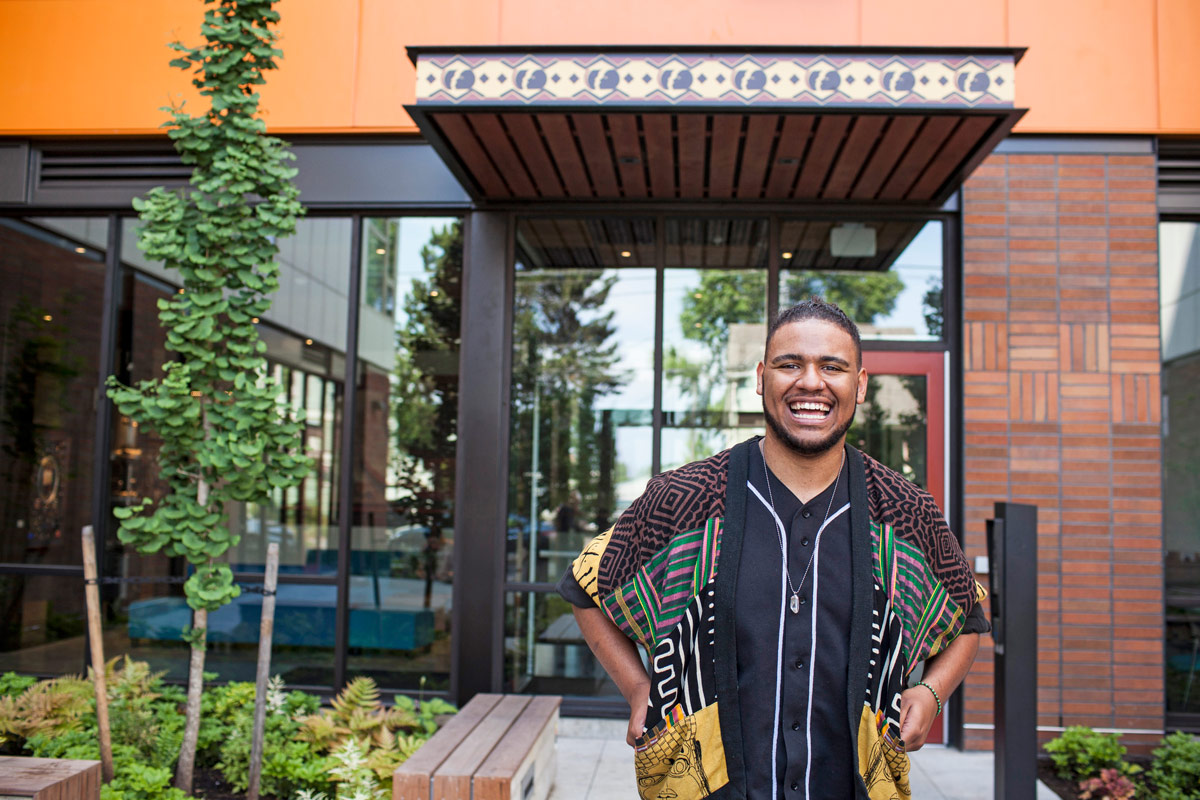
A community member in front of the Liberty Bank Building located in the Central District neighborhood of Seattle. Photo courtesy Byrd Barr Place.
To address a history of racial capitalism, nonprofits need to engage community members who have been most impacted by that legacy and respond to their wishes. The outcomes are meaningful to the community served, while still driving economic growth in ways tailored to its needs.
So, the community of practice went back to work and uncovered an opportunity in the shuttered Liberty Bank Building.
Opened in 1968, Liberty Bank was the first Black-owned bank in the Pacific Northwest, founded as a community response to redlining and disinvestment in the predominately Black Central District. Liberty Bank closed in 1988. The community of practice organized an effort that eventually led to the redevelopment of the building, which culminated in the creation of 115 units of affordable housing and a hub for Black- and people-of-color-owned local businesses.
The building is now owned and operated by an organizational partner within the community of practice. The project resisted the legacy of racial capitalism by working to restore Black ownership and reinforce a sense of community and inclusion. (The Foundation’s funding supported the community of practice and not the rehabilitation of the Liberty Bank Building.)
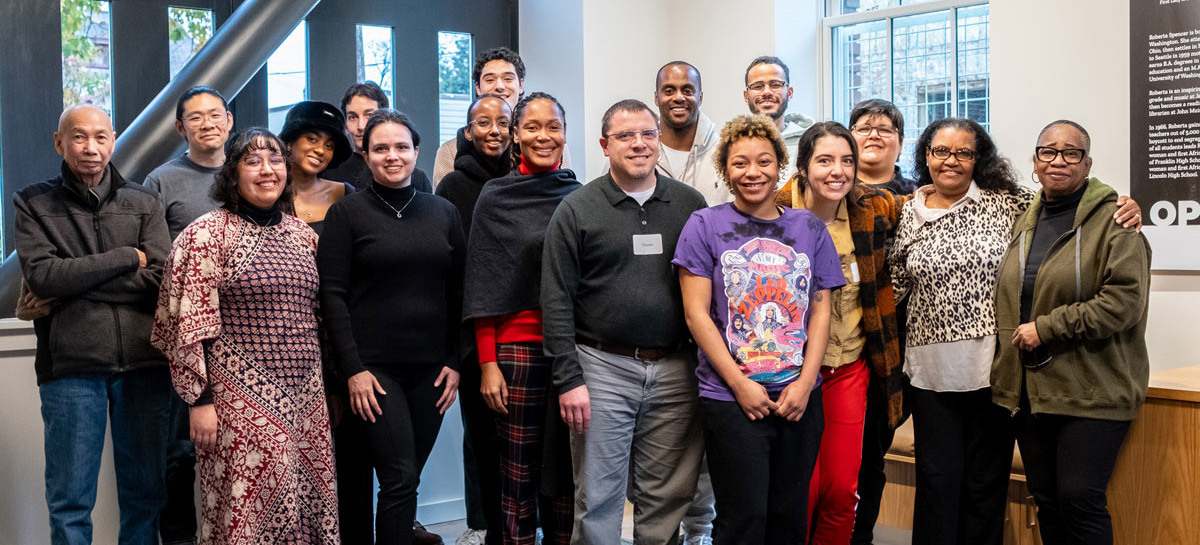
The Byrd Barr Place team in the lobby of their newly renovated home, the historic Fire Station 23 in the Central District neighborhood of Seattle. Photo courtesy Byrd Barr Place.
Among the important lessons is the understanding that, to address a history of racial capitalism, nonprofits need to engage community members who have been most impacted by that legacy and respond to their wishes. The outcomes are meaningful to the community served, while still driving economic growth in ways tailored to its needs.
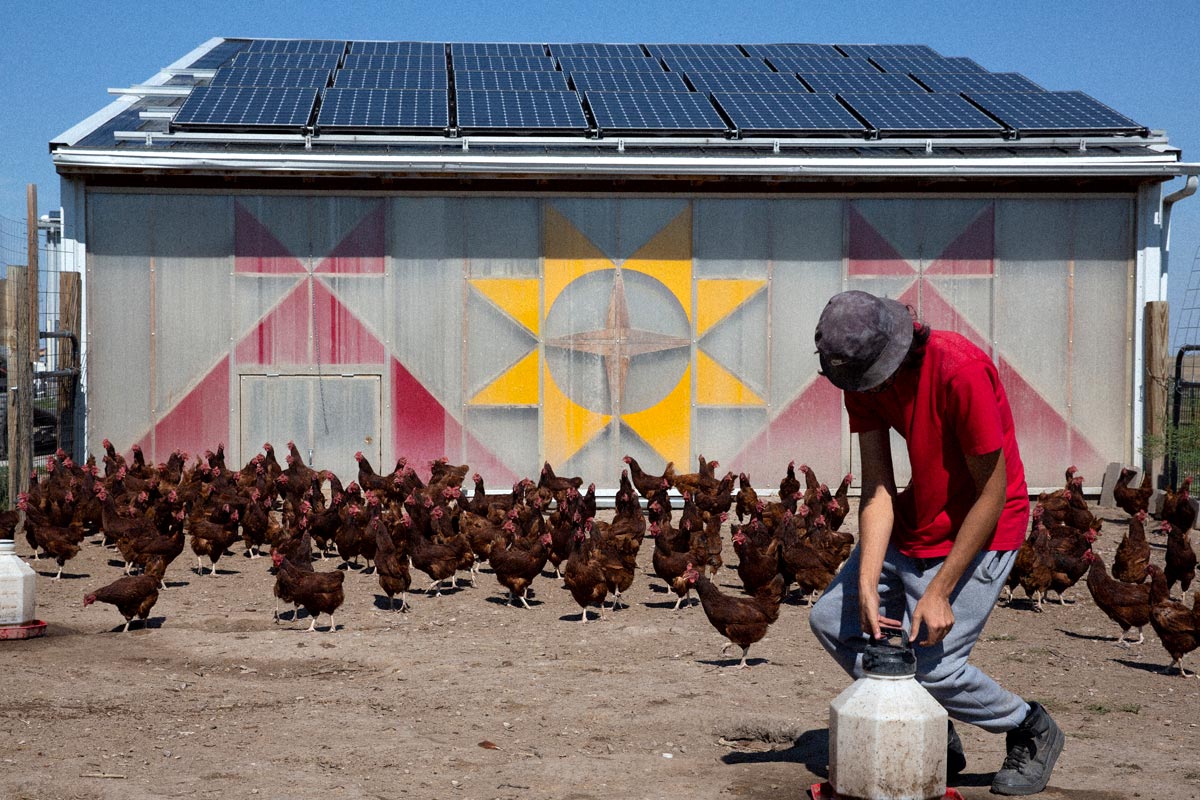
A farm assistant for the Thunder Valley Regenerative Community Development Food Sovereignty Initiative feeds and waters the chickens outside their coop, Porcupine, SD. Photo courtesy Thunder Valley CDC.
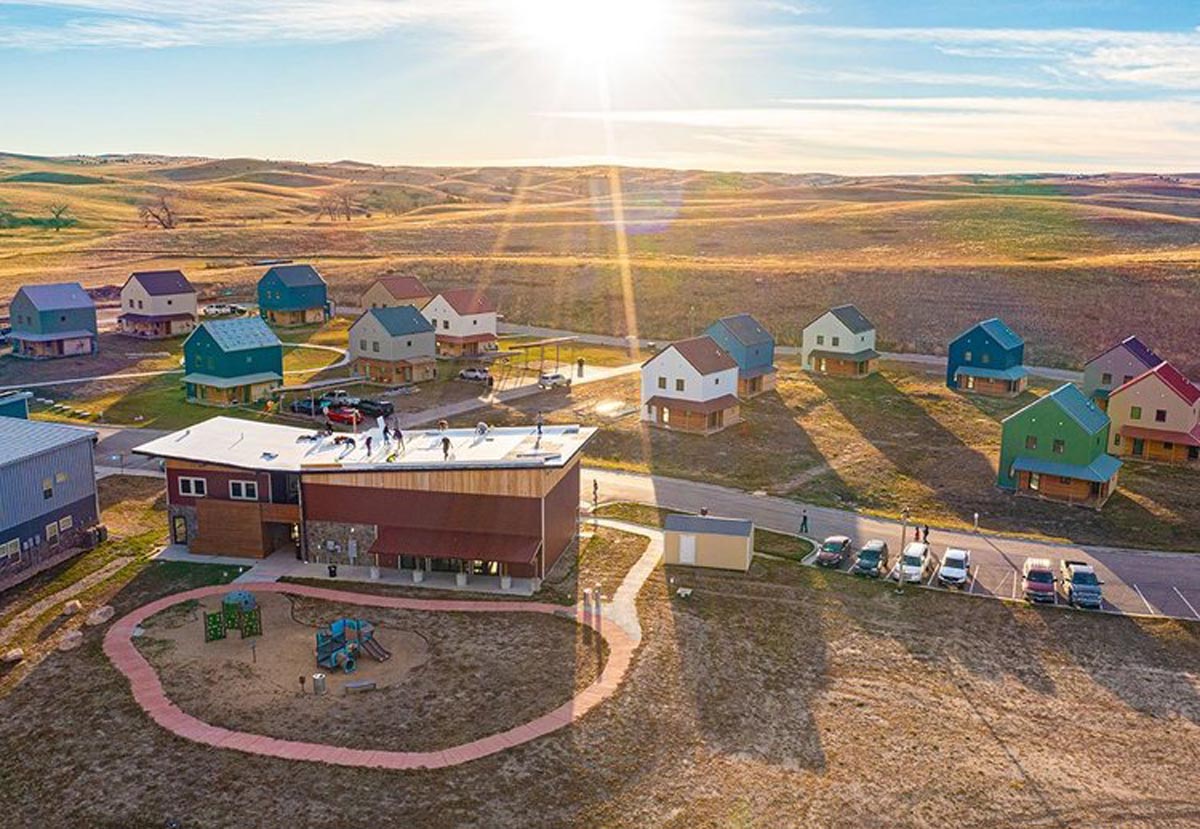
The roof of Thunder Valley Regenerative Community Development’s community center and bunkhouse is repaired following a major summer storm and prior to receiving a new 19.44 kWh solar array, Porcupine, SD. Photo courtesy Thunder Valley CDC.
The Lifeways and Wellness Equity framework guides all Thunder Valley CDC initiatives so that the organization and community can achieve self-determination and collective healing.
The LWE framework helps TVCDC counter racial capitalism through initiatives like its Regenerative Community Development Initiative (RCD). RCD is focused on development projects, such as the construction of a community center and recreational outdoor spaces. However, the initiative employs the LWE framework to ensure these projects are based on Lakota values and way of life.
For instance, a healing relationship with Uŋčí Makȟá (Grandmother Earth) is centered by prioritizing renewable energy, environmental sustainability, and community vision for each development project. Spaces that promote well-being are also a priority. Intentional focus is given to the impact on the environment by carefully managing building products that projects use, who is hired, and how fossil fuel consumption can be minimized.
Similarly, the LWE framework guides all TVCDC initiatives so that the organization and community can achieve self-determination and collective healing. TVCDC’s strategic approach further illustrates how cultural wisdom is at the root of its connected initiatives and vision of liberation.
There is not going to be a one-size-fits-all way of building alternatives. Each community needs alternatives to racial capitalism that respond to its history, culture, and current needs.
Photo top: Anahuac Farm fall harvest at Nuevo Amanecer farmworker housing community, Woodburn, OR. Photo courtesy CAPACES Leadership Institute.

